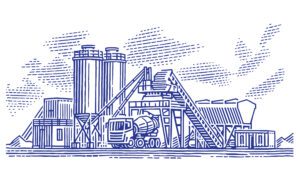How Technology Can Help Prevent Work Fatalities – A Look at OSHA 2020 Violations
Workplace safety and training remain a top priority for manufacturers who understand how critical it is to keep their employees safe. Despite advancements in technology and workplace safety, OSHA violations are still a major workplace issue – fall hazards, severe injuries, amputations and fatalities, to name a few. Not only do these violations end up costing companies significant amounts in fees, but they also bring about the cost of lost time in incident rates, decline of employee morale and damage to the brand’s reputation.
Despite the reduction in the number of OSHA federal workplace safety inspectors during the previous presidential administration, and the resulting decline in total inspections, there were still steep citations against companies for willful repeat and serious violations. For example, during the pandemic, a frame operating company received numerous OSHA citations for exposing workers to multiple safety hazards and the company was fined almost $2 million in penalties including a Department of Labor lawsuit.
OSHA Violations for 2020
OSHA recently released its top 10 safety violations of 2020. Fall protection remained the most frequently cited workplace safety violation for the tenth consecutive year. Despite safety training, procedures and protocols in place to protect workers on the job, these issues still remain and companies find themselves in violation of this standard.
Here is the full list of OSHA violations for 2020:
- Fall protection – general requirements: 5,424 violations
- Hazard communication: 3,199 violations
- Respiratory protection: 2,649 violations
- Scaffolding: 2,538 violations
- Ladders: 2,129 violations
- Lockout/tagout: 2,065 violations
- Forklifts and powered industrial trucks: 1,932 violations
- Fall protection – training requirements: 1,621 violations
- Personal protective and lifesaving equipment – eye and face protection: 1,369 violations
- Machine guarding: 1,313 violations
All of these incidents are preventable. Scaling safety procedures across your operations is even more critical now. And under the current U.S. presidential administration, it’s clear that there’s an emphasis on protecting worker health and safety under OSHA.
Reduce OSHA Violations With Connected Worker Technology
So, if worker safety is a top priority for manufacturing companies, why do OSHA violations continue to occur? Where is the disconnect? Why do companies find it difficult to train employees and uphold safety standards?
Based on a recent survey of manufacturing facilities by Occupational Health & Safety, companies face three roadblocks when delivering safety training: finding time, being able to verify the training was effective, and the inability to follow up with refresher training.
The answer to these challenges can be addressed by the use of technology. You can improve the safety of your workers by implementing digital standardized operational procedures (SOPs) across sites to safeguard frontline workers.
The first step would be to implement best practices for conducting both Safety Incident Investigations and Safety Observations. From there, you would digitize those SOPs which can help ensure compliance with changing health and safety requirements.
Connected Worker® by Parsable offers a more flexible and scalable solution so that when you need to update a checklist or workflow, you can make those updates right away and integrate them into your workflows directly. Every time a policy is revised or a new regulation is issued, those updates can be immediately pushed out to the entire team and across all sites. You can’t do that with manual paper-based processes.
Last but not least, the ultimate goal should be to capture data for safety practices, and to have real-time visibility into safety performance enterprise-wide, across regional and facility-specific levels. All of these will lead to reduction of rate of preventable accidents, enable effective near miss reporting and eliminate repeat incidents. Even when accidents happen, having instant access to a detailed digital record of exactly what happened leading up to the event will help with audits. And, you can collect on-site evidence and information, like photos, voice notes and interviews. Ultimately, the information will help remediation.
Interested in learning more about workplace safety? Here’s how you can reduce stress for safety managers.







